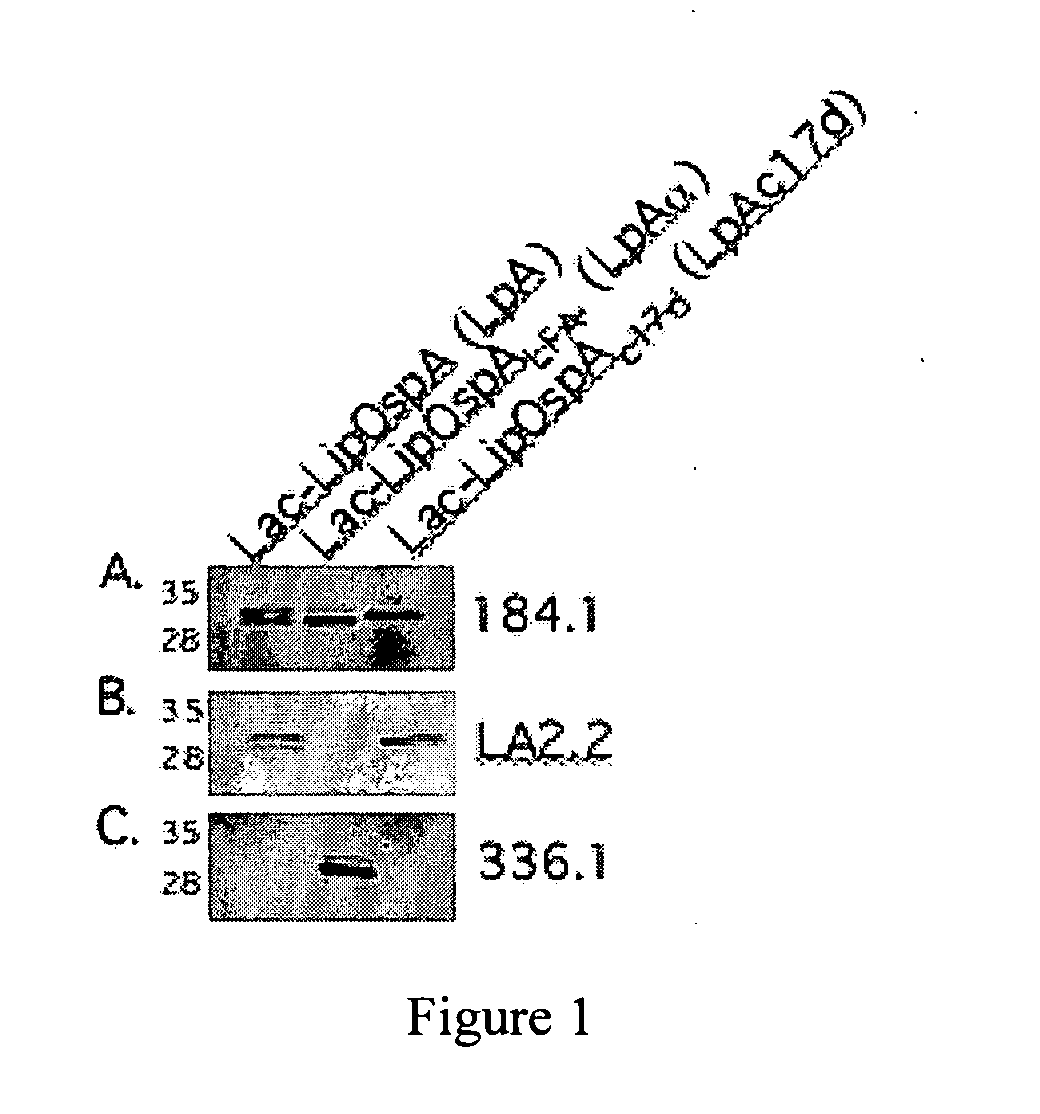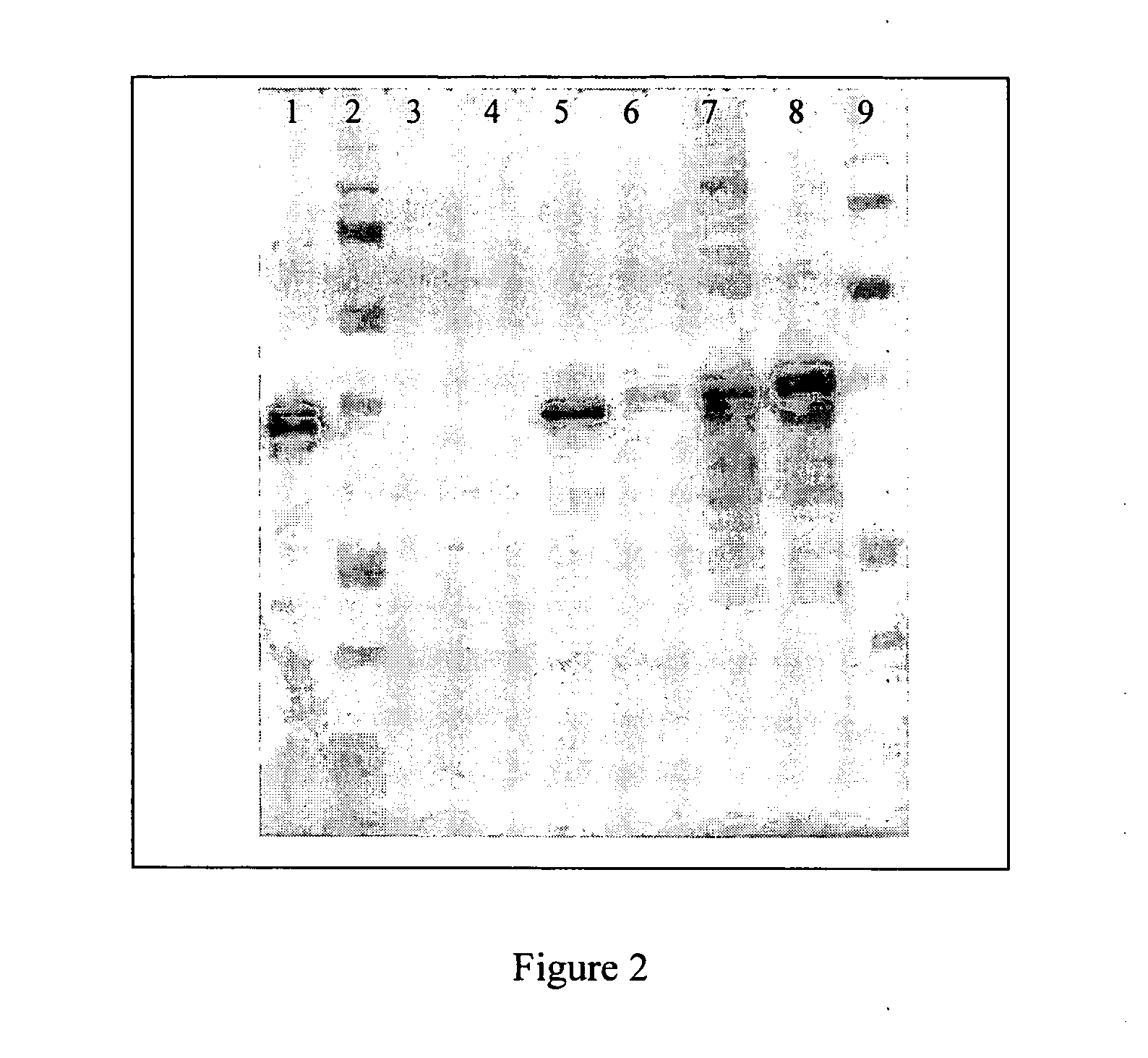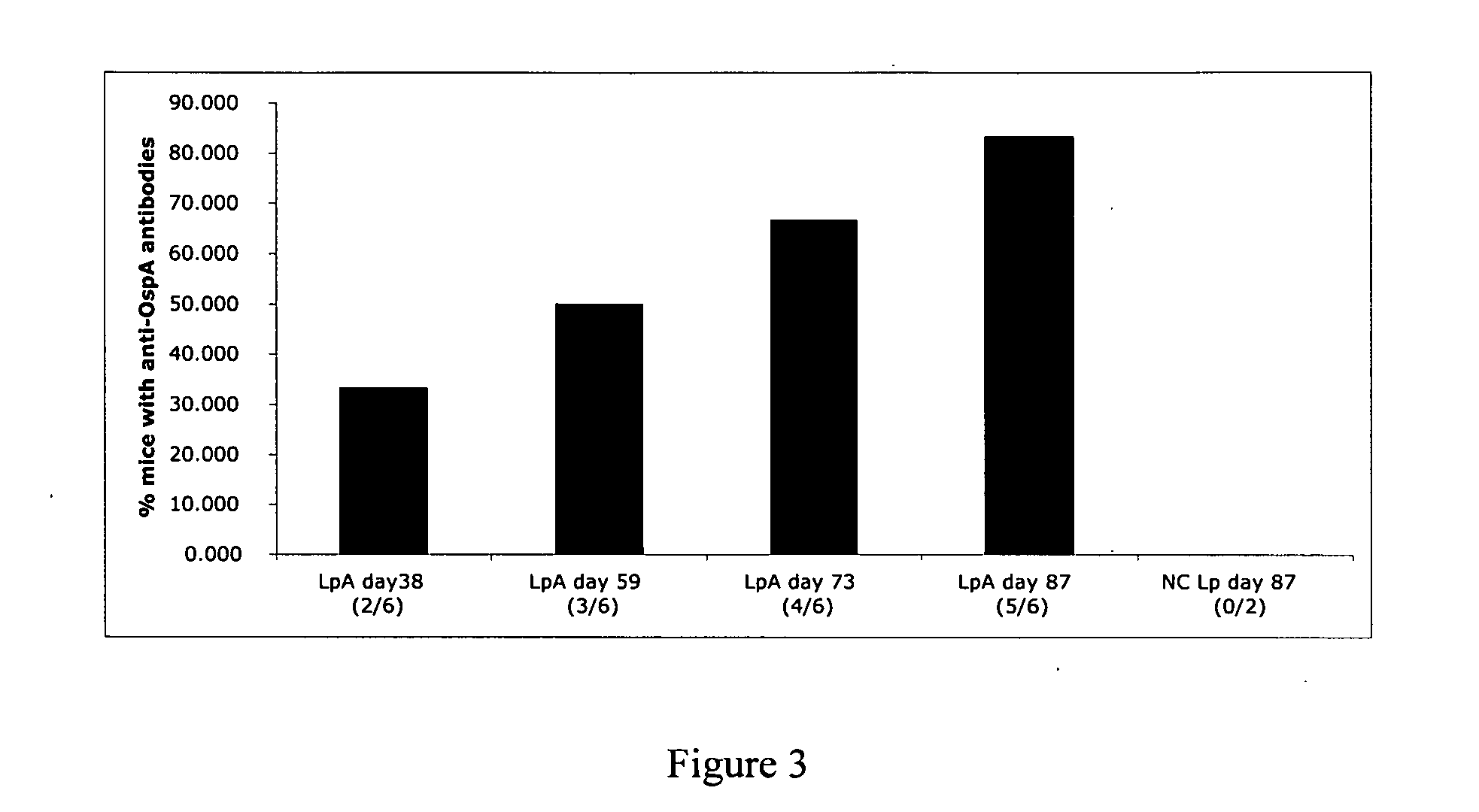Live bacterial vaccine
a bacterial vaccine and live technology, applied in the field of bacteria, can solve the problems of high risk of infected people within a radius of two meters of individuals with pneumonic plague, extremely contagious pneumonic plague, and inability to carry out a single dose,
- Summary
- Abstract
- Description
- Claims
- Application Information
AI Technical Summary
Benefits of technology
Problems solved by technology
Method used
Image
Examples
example i
Materials and Methods
A. Clones Available in Our Laboratory:
[0112]TUNER(DE3)pET28a-LcrV (Kan+, Cm+): this clone contains Y. pestis LcrV cloned in an E. coli expression vector. Protein expression is induced by IPTG.
[0113]TUNER(DE3)pET28a-YopD (Kan+, Cm+): this clone contains Y. Pestis YopD cloned in an E. coli expression vector. Protein expression is induced by IPTG.
[0114]AAEC185pCAF1, tet+: this clone has Y. pestis F1 cloned in an E. coli regular vector. F1 expression in induced by shifting cultures from 28 C to 37 C overnight.
B. Clones to be Used for Challenge Studies:
[0115]Y. pestis, strain Colorado 92 (C092), F1+
[0116]Y. pestis, F1
C. Purification of Yersinia Proteins:
[0117]Recombinant LcrV and YopD: Escherichia coli (strain BL21 (DE3)) is transformed with the plasmid encoding the target gene, grown in 1000 mL TBY media (5 g / l NaCl, 10 g / l tryptone, 5 g / l yeast extract, 25 μg / l chloramphenicol and 30 μg / l kanamycin) at 37° C. in a shaking incubator. When the OD600 reaches 0.4-0.6 u...
example ii
Construction and Testing of Lactobacillus plantarum (Strain 256) Bacteria which Express Polypeptides that Contain, at their N-Termini an OspA Leader Sequence (Either Wild Type or Modified)
[0122]Lactobacillus plantarum (strain 256) was transformed individually with three DNA constructs, as indicated in FIG. 1. A description of the DNA constructs used to make these bacteria is presented below. Protein extract was obtained from each of the induced bacteria and was subjected to Western blot analysis against anti-OspA monoclonal antibodies 184.1, LA2.2 and 336.1. The specificities of the monoclonal antibodies are as follows: mAb 184.1 is specific for the N-terminal region of B. burgdorferi OspA; mAb LA2.2 is specific for the OspA epitope from amino acids 165-173; mAb 336.1 is specific for the C-terminal region of B. afzelii. The antigenicity of each of the bacteria (vaccines), as determined by immunoblotting with the three monoclonal antibodies against OspA, is shown in FIG. 1.
[0123]Lac-...
example iii
[0131]Oral immunization of mice with Lactobacillus expressing an antigen of interest (the B. burgdorferi OspA antigen) and determination of the systemic antibody response to the immunizing antigen. An oral vaccine against Lyme disease for human use based in Lactobacillus expressing B. burgdorferi's OspA.
[0132]We tested L. plantarum expressing OspA (LpA) by oral gavage inoculation in C3H-HeN mice in comparison with a control comprised of the parental strain (L. plantarum (Lp)). We checked the systemic IgG response to the OspA antigen and verified that 2 / 6 mice developed antibodies to OspA after the immunization (day 38); 3 / 6 mice developed antibodies after the 1st boost (day 59), then one more mouse (4 / 6, 66%) developed antibodies after the second boost (day 73); and one more developed Abs to OspA after a third boost (day 87). Overall, 5 / 6 (83%) mice developed antibodies against OspA, where we observed an increase of the total level of antibody production with time (FIG. 3). In anoth...
PUM
| Property | Measurement | Unit |
|---|---|---|
| radius | aaaaa | aaaaa |
| molecular weight | aaaaa | aaaaa |
| temperature | aaaaa | aaaaa |
Abstract
Description
Claims
Application Information
 Login to View More
Login to View More - R&D
- Intellectual Property
- Life Sciences
- Materials
- Tech Scout
- Unparalleled Data Quality
- Higher Quality Content
- 60% Fewer Hallucinations
Browse by: Latest US Patents, China's latest patents, Technical Efficacy Thesaurus, Application Domain, Technology Topic, Popular Technical Reports.
© 2025 PatSnap. All rights reserved.Legal|Privacy policy|Modern Slavery Act Transparency Statement|Sitemap|About US| Contact US: help@patsnap.com



